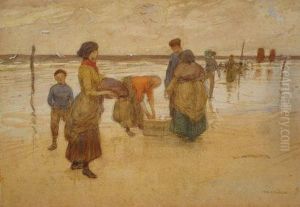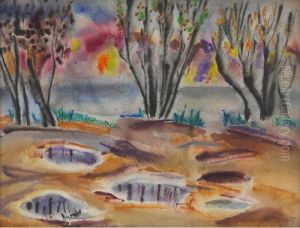Ethel Kate Burgess Paintings
Ethel Kate Burgess was an English artist known for her contributions to the Arts and Crafts movement and her skill in various mediums, including painting, embroidery, and woodblock printing. Born in 1868, her artistic journey began in an era when the opportunities for women in the arts were starting to expand, yet were still limited. Burgess took advantage of the changing tides, immersing herself in the artistic currents of her time and developing a distinct style that married traditional techniques with modern sensibilities.
Educated in London, she was part of a generation of artists who sought to break away from the industrial production methods that had become prevalent during the Victorian era. Instead, Burgess and her contemporaries aimed to revive handcraftsmanship and elevate the status of decorative arts. Her work, characterized by meticulous attention to detail and a harmonious use of color, often reflected themes of nature and mythology, common in the Arts and Crafts movement. Burgess was also influenced by the Pre-Raphaelites, whose emphasis on beauty, intricate patterns, and rich symbolism found echoes in her creations.
Throughout her career, Ethel Kate Burgess actively participated in the vibrant community of artists and craftspeople that formed around the Arts and Crafts movement. She exhibited her work at various galleries and Arts and Crafts exhibitions, gaining recognition for her artistic contributions. Despite the challenges faced by women in the arts during her time, Burgess carved a niche for herself and remained dedicated to her craft until her death in 1945.
Burgess's legacy, while perhaps not as widely recognized as some of her contemporaries, remains significant in the history of British art. Her work exemplifies the ideals of the Arts and Crafts movement—beauty in handcrafted objects, a return to nature, and the importance of artistic expression in everyday life. Today, her pieces can be found in collections and museums dedicated to this period, serving as a testament to her artistic achievements and her role in a pivotal movement in the history of art.



